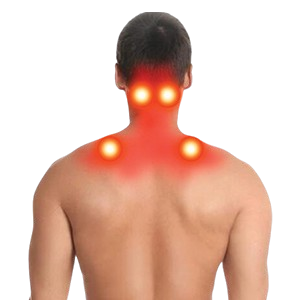The most common neck complaint is generalised tension in the neck, it normally starts from the shoulder and upper back and extends up both sides of the neck into the base of the skull. It may be associated with tension headaches, which are headaches that refer from the shoulder muscles to the side and front of the head. There tends to be a physical tension in body, which gets triggered by long hours of sitting and/or stress, disturbed or lack of sleep, and anxiety can also be a trigger for this type of problem.
The vast majority of people with this type of neck pain have months or years of accumulated tension and tightness in the muscles, specifically the muscles of the shoulders (the main culprit), as well as the front of the neck (SCM) and base of the skull (suboccipitals). Kieran uses deep tissue massage, trigger point massage and myofascial release to the vital postural muscles. Although the pressure required needs to be quite strong, it is often described as a “good or relieving pain” and can be quite relaxing. Necessary spinal adjustments are also performed on any associated areas of spinal dysfunction for the best results. Kieran may also give you self-treatment/management strategies (not stretching) to effectively target the problem muscles yourself at home.



